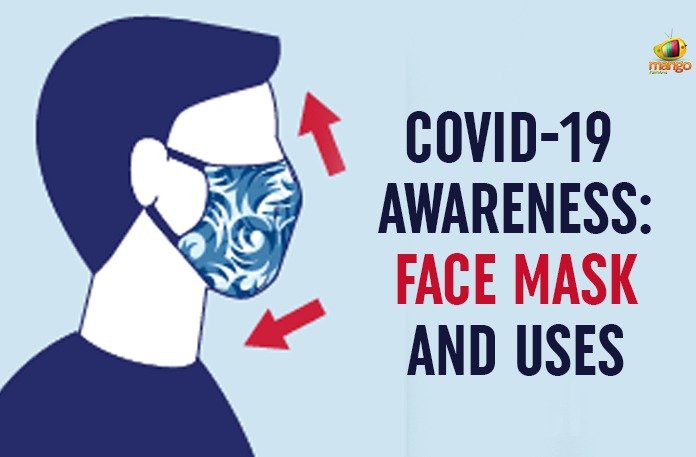Since the Novel Coronavirus or Covid-19 broke out globally, wearing face masks, using sanitizers and maintaining distance have become a new trend of living.
People are mandated to wear face masks in public, to avoid the chances of being infected by the Novel Coronavirus.
Since the global outbreak of the disease, nearly 15 million people are infected, 5 million are dead and a large number of people are worried of being infected by the Novel Coronavirus infection.
With a lethal transmission and declared as an airborne disease, the pandemic Novel Coronavirus, gave humans a new standard of living.
While many countries like the United States of America (U.S.A.,) Brazil and India are trying to control the spread of the virus, countries like New Zealand, Canada, Portugal and Japan are trying to live with new standards after the Novel Coronavirus.
However, what are common steps to prevent the Novel Coronavirus remains same for every country, wearing of face masks and social distancing of 6 feet.
Why is it important to wear a face mask?
A cloth face mask in places where it can be hard to stay 6 feet away from others, like grocery stores, bus stands, markets and other public places is mandatory.
Wearing face masks could reduce the chances of being in contact with the virus by 70% to 80 %.
Expert medical research and studies show that people can spread Coronavirus even if they don’t have symptoms (called asymptomatic) or before they have symptoms (called presymptomatic.) In fact, you might be the most contagious just before the symptoms begin.
Hence, wearing a face mask is one of a proven preventions from the virus.
Types of face masks:
Before one buys or makes a face mask, one should know a few things like types of mask, how it works and other basic things.
When someone, infected of the COVID-19 infection, coughs, sneezes, or talks, they send tiny droplets with the Coronavirus into the air.
A face mask covers your mouth and nose preventing you from inhaling those contagious viruses in the air. It can block the release of virus filled droplets into the air when you cough or sneeze. This helps slow the spread of COVID-19.
Can face masks protect from the Coronavirus?
A cloth face mask won’t totally block the Cronavirus, but could be a layer of protection for you and the people around you when you use it along with regular handwashes, sanitizer and social distancing.
Types of mask:
N95 respirators and surgical masks should be reserved for health care workers and first responders. Since the N95 masks are limited, it should be used by healthcare workers treating COVID-19 patients.
N95 respirator masks fit tightly around your face. They filter out 95% or more of the smallest particles in the air.
Such masks are often blue with white borders. They fit loosely across your nose and mouth. These masks shield against the large droplets that come from a sick person’s cough or sneeze.
Cloth masks:
These masks are best for people who don’t work in healthcare and are not in close contact with COVID-19 patients.
Cloth face masks are easy to make and could be washable.
Filter vs. no filter
A series of layers of fabric makes more places for virus particles to stick instead of going out into the air. A filter helps in this process. But too many layers might make it hard to breathe. Use the mask that’s most comfortable so you’re more likely to keep wearing it. Be sure to check that the filter material doesn’t have something dangerous like fiberglass in it.
What to look for when buying a mask?
If one is buying a cloth mask, check that it uses designs or sewing instructions from experts like the Centre for disease Control (CD) or your local hospital. Choose a mask with more than one layer of fabric, assuring it is not too hard to breathe through the material.
Fit is just as important as air flow. Look for a mask that fits your face well and is comfortable enough that you’ll be willing to use it. There shouldn’t be any gaps around your nose, mouth, and chin.
Be sure you can take off the mask using only the ties or ear loops. You should be able to wash and dry your mask without damaging it or changing its shape.
When one should wear a face mask?
As per the CDC recommendations, everyone over the age of 2 should wear cloth face masks in public places where it’s hard to stay 6 feet away from other people.
Wear a face mask if one feels sick and around other people or animals, even at home.
Caregivers should use them when cleaning and disinfecting a sick person’s bedroom or bathroom.
Remember that a mask should be used in addition to other COVID-19 safety steps.
People Who Shouldn’t Wear Face Masks
CDC guidelines say certain people shouldn’t wear masks:
Children under 2
People who have trouble breathing
Someone who’s unconscious
Someone who can’t move or take off a mask without help.
While exercising
How to remove your face mask?
Take the mask off after you’ve worn it or if it gets damp. Try not to touch the front of the mask when you remove it. That’s where the germs are. Instead, pull it off by the ear loops or ties.
How to clean for re use of face masks?
Wash cloth masks with hot water and detergent or soap after each wear. If your mask has a filter, take it out and throw it away before washing. Put the masks in your washing machine and hang them to dry. Wash your hands when you’re done.
Before you use the mask again, check for holes. Be sure it’s not frayed and doesn’t gap around your face.
Besides wearing face masks, follow the social vaccine and stay safe and healthy during this pandemic crisis of the Novel Coronavirus.
Stay tuned for further updates.




































